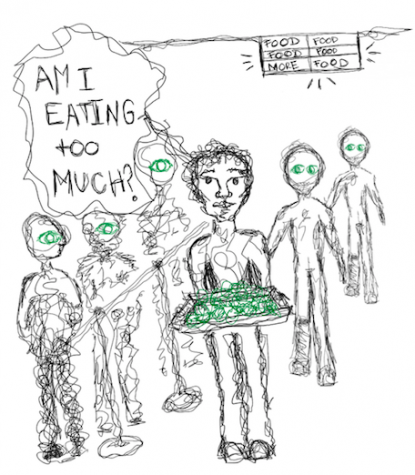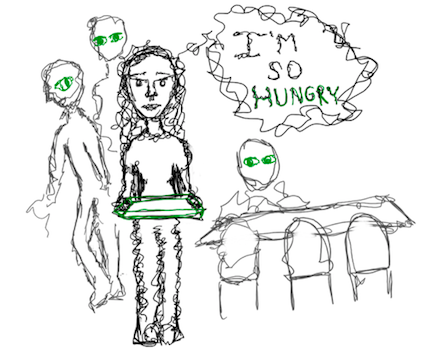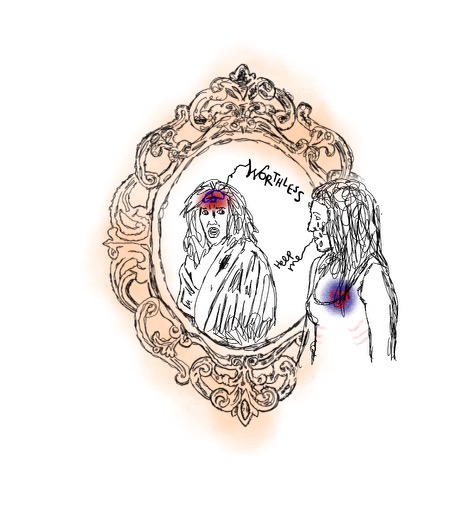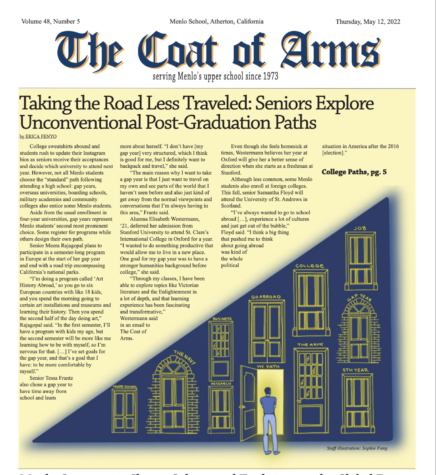Eating Disorders and the Menlo Community: Package Cover
This package explores eating disorders in the Menlo community. Most stories are also featured in our 47.1 print edition, except for the introduction and the story about eating disorder culture, both by Spread Editor Tessa Frantz. Those two stories were unfortunately not included in the issue due to an unintended omission. Displayed here are all of the stories from the 47.1 spread. The Coat of Arms would like to thank each person who was interviewed, as well as our readers, who are dedicated to helping develop awareness about and continue the conversation surrounding eating disorders.
———
Spread Editor Tessa Frantz writes a short preface to this spread, warning readers of the possible triggering content and providing more information on eating disorders in general. Frantz writes about the importance of readers understanding CoA’s purpose in making this spread, which is to educate readers, spread awareness and encourage open communication regarding mental health problems. Please read this introduction to better comprehend the other stories and to read them with empathy.
Please note that this was one of the stories that was originally intended to be in the October 2020 47.1 print edition, but did not print due to complications.

Menlo Students Reflect on Eating Habits, Glorification of and Stigma Around Eating Disorders
Spread Editor Tessa Frantz writes about the culture of eating disorders at Menlo, including students’ thoughts on diet culture and discomfort in the cafeteria, specifically how students appear to be restricting their eating at lunchtime. Some students who were interviewed note the glorification of eating disorders and the stigma associated with them, while others insist that the Menlo community is starting to be more open to discussing eating disorders.
Please note that this was one of the stories that was originally intended to be in the October 2020 47.1 print edition, but did not print due to complications.
Alex McCusker’s Journey With Anorexia
“I think that people glorify not eating; it has become a bragging right. I have heard people talking about what they eat in a day and usually when people, especially teenage girls, don’t eat a lot in a day, they tend to brag about it. People say these things thinking it’s cool to not eat, but it’s not. It’s terrifying, isolating and utterly damaging to oneself. It’s really difficult. It’s not glorious,” senior Alex McCusker said. In this story, Print Editor Sophia Artandi interviews McCusker about her experience with anorexia throughout high school.

French Teacher Corinne Chung Shares Her Experience With Eating Disorders
“People don’t realize that it isn’t just a teenager problem. Some young adults develop eating disorders, and some of them [last] until much later in life,” French teacher Corinne Chung said. Spread Editor Tessa Frantz writes about Chung’s experience struggling with both anorexia and bulimia for a long time. Though Chung said she’s always in recovery, she reflects on how having an eating disorder has shaped her life.
“It can be really dangerous to play around with restricting calorie intake because you don’t know how your brain will react. It’s like playing with fire,” math teacher Dr. Rebecca Akers said. Print Editor Sophia Artandi interviews Akers about her experience with a family member who had anorexia. She provides insight from her personal experience on how to best be there for a family member or friend.

Social Media, Stress, Body Image Can All Lead to Eating Disorders, Counselors Say
Assistant Spread Editor Riley Huddleston interviews school counselors Jake Fauver and Tracy Bianchi about the relationship between social media and eating disorders, specifically how seeing false or photoshopped images can lead to negative thoughts about one’s body and how especially during shelter-in-place, people tend to compare themselves to images they see on social media. “People start getting in their head and comparing themselves and then don’t actually end up seeing their body the way it’s represented,” Fauver said.














